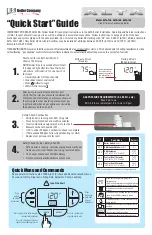
61
21.6 Conventional Expansion Tank (Not
Provided)
In a properly assembled system, expanding water flows
into an expansion tank.
• Expansion tank should be sized correctly because
improperly installed or sized expansion tank may result
in frequent lifting of relief valve or other heating system
problems.
• It is important to install tank higher than top of boiler.
Connecting pipe from boiler to expansion tank shall rise
continuously up to expansion tank so that air can rise
into expansion tank.
•
Expansion tank is partially filled with air. Air compresses
as water expands, thus forming an air pressure
cushion. This “spring-like” cushion serves to maintain
correct operating water pressure regardless of water
temperature. This assures a “full measure” of water, even
in highest radiation unit of the system.
•
Tank also serves as trap for excess air in the system. Air
can cause noises in pipes and inefficient circulation in
radiators if left in piping system.
•
It is possible for a tank to become “waterlogged” (filled
with water). It can also become overfilled with air when
filling system with new water. Fittings on tank and in line
to tank are for bleeding off excess air and water.
21.7 Diaphragm Expansion Tank (Not Provided)
Diaphragm type expansion tank takes place of conventional
expansion tank.
• Carefully read instructions packed with your tank
assembly. Expansion tank should be sized and installed
correctly. Improperly installed or sized expansion tank
may result in frequent lifting of relief valve or other
heating system problems.
• Tank typically comes with 10-12 psi air charge. Same as
pressure produced in system by automatic fill valve set
to fill boiler to 10-12 psi with fresh water. When system
is first filled, tank will fill partially with water. As water is
heated, and system pressure increases, water expands
into tank and compresses air in the tank. This compressed
air cushion permits water in the system to expand as
temperature changes and assures “full measure” of water,
even in highest radiation unit of system.
• Diaphragm type expansion tank can be mounted on air
purger fitting or at any other convenient place in supply
or return line. It is recommended to locate diaphragm
type expansion tank in supply line with circulator located
after expansion tank. This configuration allows circulator
to “pump away” from expansion tank for improved air
elimination and system performance.
•
Air eliminator fitting or air purger is not provided. Air
eliminator fitting or air purger is used to help remove
air from system before it reaches radiators. It should be
installed in supply line. Air left in system can cause noises
in pipes and inefficient circulation in radiators.
21.1 Limit Relay Control (provided)
Water temperature limit control in limit relay is adjustable.
See Limit instructions for how to set limit temperature.
21.2 Drain Valve (provided)
Drain valve is manually operated valve, means of draining
all water from boiler and heating system. Installed in
casting below burner door.
21.3 Circulator
•
Forced hot water systems require circulator.
•
Separate circulator or zone valve is required for each
zone, if there are two or more zones. Circulator must
have capacity to provide circulation required by heating
system.
• Circulator should be connected to supply main and must
be wired into boiler’s electrical system. “9 - Boiler System
Piping” for piping configurations with circulator located on
supply main piping using zone circulators or zone valves.
• When piping is arranged with zone circulators and no
bypass piping, circulator provided with boiler may be
used as zone circulator. Both piping arrangements allow
circulator to pump away from expansion tank and show
how piping should be arranged to allow heating system to
be easily purged of air.
• Circulator can be installed on return side of boiler, if
preferred.
21.4 Main Air Vent: (Not Provided)
Before system is filled with water, there is air in pipes and
radiation units. Some air will be trapped as system is filled.
It is possible to eliminate most of this air through air vents
on radiation units. Main air vent will speed and simplify this
process. Main air vent should be installed on highest point
in supply main.
21.5 Automatic Fill Valve (Not Provided)
Hot water system must be filled with water. Adding new
water, when needed can be done manually (by use of hand
valve in water supply line). This requires regular attention
to system’s needs. Automatic fill valve or pressure reducing
valve accomplishes this without attention. Install in supply
line on hot water boilers only. Valve operates through
water pressure differentials. It does not require electrical
connection.
21 - EQUIPMENT AND ACCESSORIES
PN 240013415 REV A [08/15/2021]




































